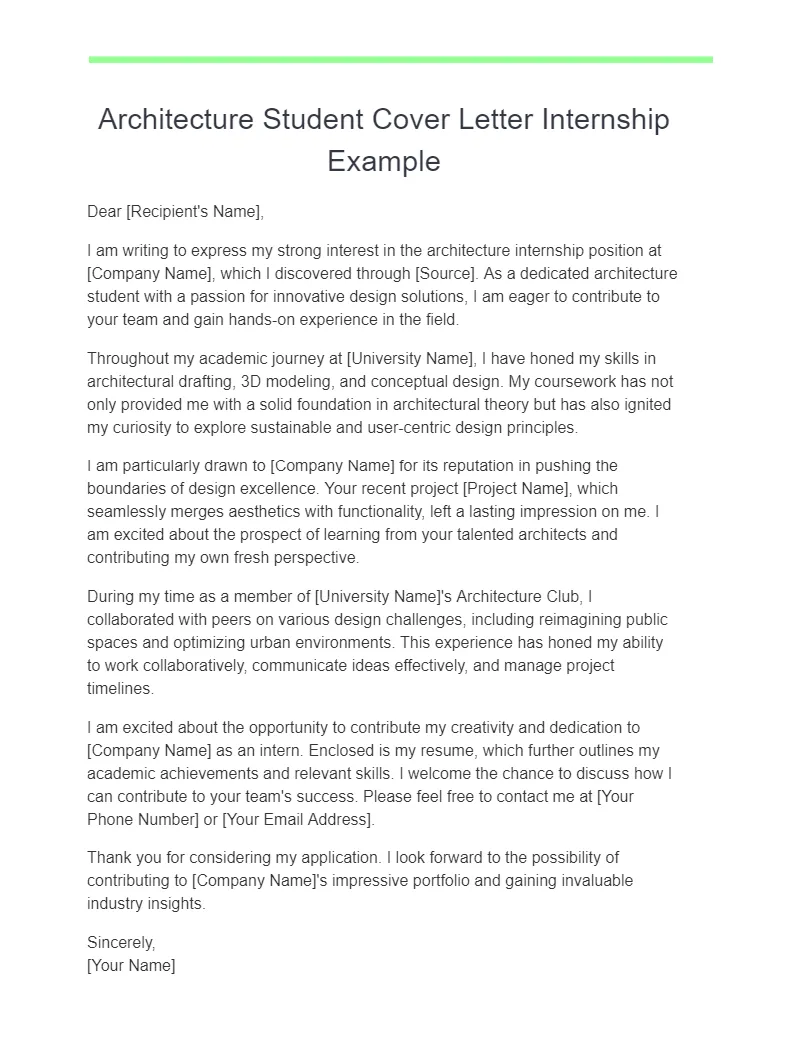Understanding the Architecture Internship Cover Letter
An architecture internship cover letter is your first opportunity to make a positive impression on a potential employer. It’s more than just a formality; it’s a crucial tool in securing an interview and, ultimately, the internship. This document serves as a personal introduction, allowing you to showcase your enthusiasm, relevant skills, and understanding of the firm. The cover letter should complement your resume, providing context and depth to your application. Unlike a resume, which lists your experiences, the cover letter allows you to narrate your story, explaining why you are the ideal candidate for the position. It’s a chance to communicate your passion for architecture and demonstrate your ability to articulate your qualifications effectively.
Key Components of an Architecture Internship Cover Letter
A well-structured cover letter includes several essential components. These elements work together to create a compelling narrative that grabs the reader’s attention and highlights your suitability for the internship. The key components include your contact information and the date, the hiring manager’s information, a compelling opening paragraph, showcasing your passion for architecture, highlighting your relevant skills and experience, mentioning projects and portfolios, demonstrating your knowledge of the firm, expressing your enthusiasm and availability, and a strong closing. Each part plays a critical role in conveying your message effectively and making you stand out from other applicants. Neglecting any of these components could weaken your application and reduce your chances of getting an interview.
Your Contact Information and the Date
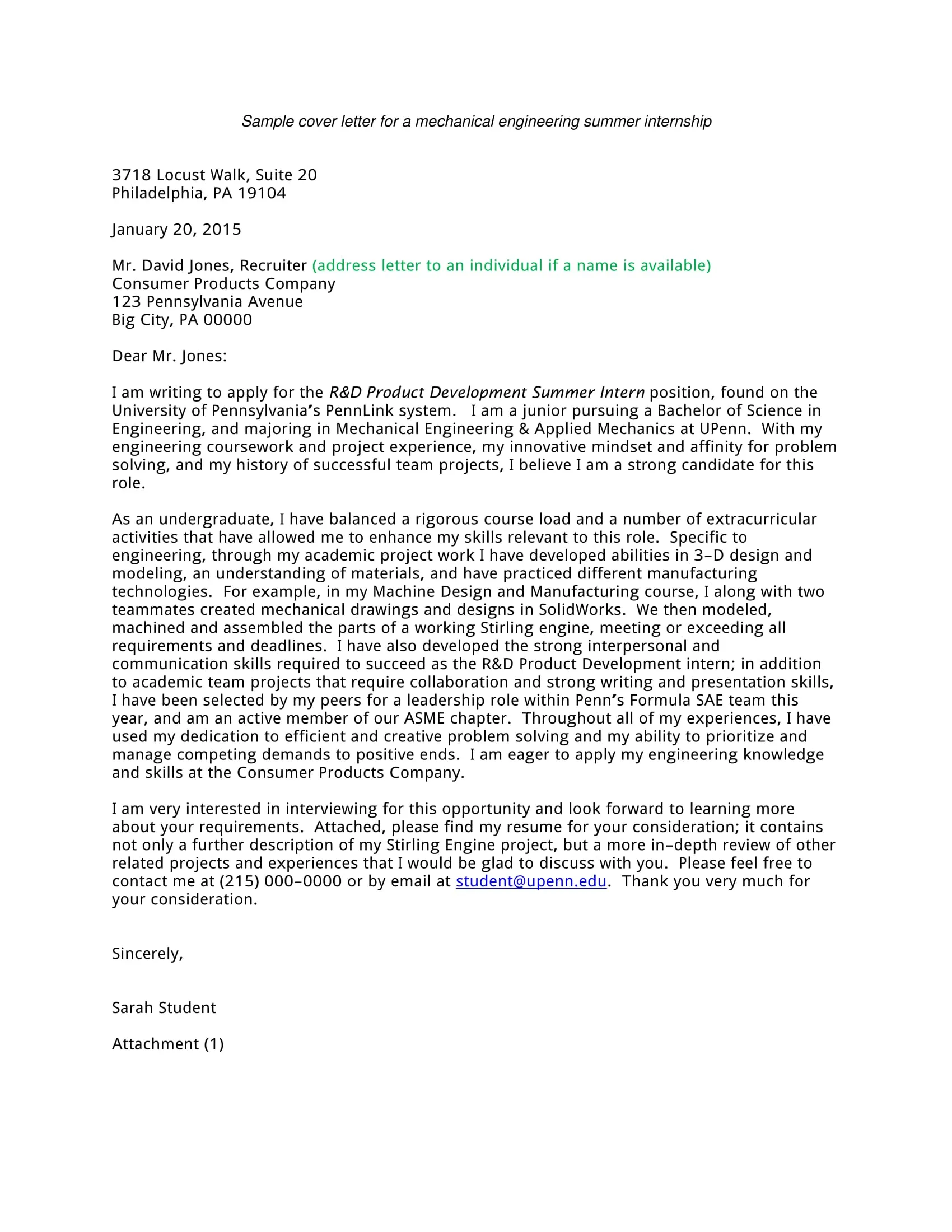
Start your cover letter with your contact information, including your full name, address, phone number, and email address. This is the standard way to ensure the hiring manager can easily reach you. Directly below your contact information, include the date on which you are submitting the cover letter. This establishes a clear timeline for your application. It’s a simple but essential detail that maintains professionalism and clarity. Make sure the formatting is clean and easy to read, using a font size that is consistent with the rest of the letter. Double-check all your contact details for accuracy to avoid any potential miscommunication.
The Hiring Manager’s Information
Addressing the hiring manager by name is a significant step in personalizing your cover letter. If possible, research the name of the person responsible for reviewing applications. This shows that you have taken the time to learn about the firm and the specific role. If you are unable to find a specific name, using a title like “Dear Hiring Manager” is an acceptable alternative, but it’s always better to personalize it. This demonstrates a proactive approach and attention to detail, which can significantly boost your application. Ensure you spell the name correctly; a misspelled name can create a negative first impression. Use formal salutations like “Mr.”, “Ms.”, or “Dr.” before their last name when addressing the recipient.
Crafting a Compelling Opening Paragraph
The opening paragraph is your chance to grab the hiring manager’s attention. Start with a strong, concise statement that explains why you are writing and what position you are applying for. Express your enthusiasm for the internship and the firm. Briefly mention something that sparked your interest in the position or company. A well-crafted opening paragraph sets the tone for the rest of the letter and encourages the reader to continue. Avoid generic phrases; instead, write something that is specific and demonstrates your genuine interest in the opportunity. Show them why you are an excellent candidate right from the start. Think of it as your personal elevator pitch - a quick, impactful introduction to your aspirations and qualifications.
Showcasing Your Passion for Architecture
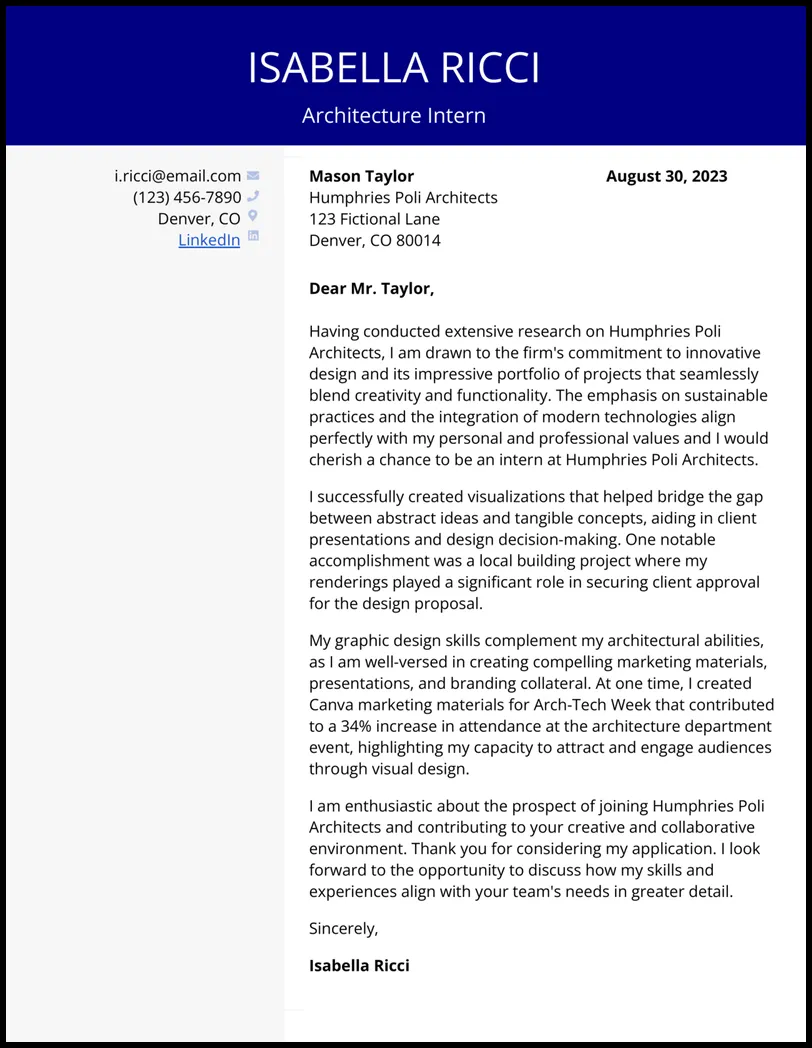
Your cover letter should reflect your genuine passion for architecture. Share what excites you about the field, the aspects of design that you find most captivating, or any specific areas of architecture that you are particularly interested in. This is your opportunity to go beyond the technical aspects of your skills and connect with the hiring manager on a more personal level. Explain why you chose to study architecture and what motivates you to pursue a career in this field. Demonstrating a deep interest will make you appear more committed and enthusiastic. Use vivid language and specific examples to illustrate your passion, showing the reader that you are not just seeking an internship, but building a future in architecture.
Highlighting Relevant Skills and Experience
The core of your cover letter should highlight the skills and experiences most relevant to the internship. Review the job description carefully and identify the key skills and qualifications the employer is seeking. Then, provide concrete examples of how you have developed and applied those skills in previous projects, coursework, or extracurricular activities. Quantify your accomplishments whenever possible. For instance, if you have experience with design software, specify the software you are proficient in and the complexity of the projects you have completed. Tailor this section to match the specific requirements of the internship, showing the employer that you possess the abilities necessary to excel in the role. Show, don’t just tell, by illustrating your skills with tangible achievements and results.
Mentioning Projects and Portfolios
Your portfolio is a vital part of your application, and your cover letter should direct the reader to it. Briefly mention your most relevant projects and the skills showcased within them. Highlight any achievements or unique aspects of your portfolio that align with the firm’s work or the internship’s requirements. Make it easy for the hiring manager to access your portfolio by including a link to your online portfolio or stating that a physical portfolio is available upon request. The cover letter gives you the space to describe the context, your role, and the outcomes of each project. It helps to provide a preview of your work and encourages them to delve deeper into your portfolio, increasing the likelihood of them appreciating your skills and experience.
Demonstrating Your Knowledge of the Firm
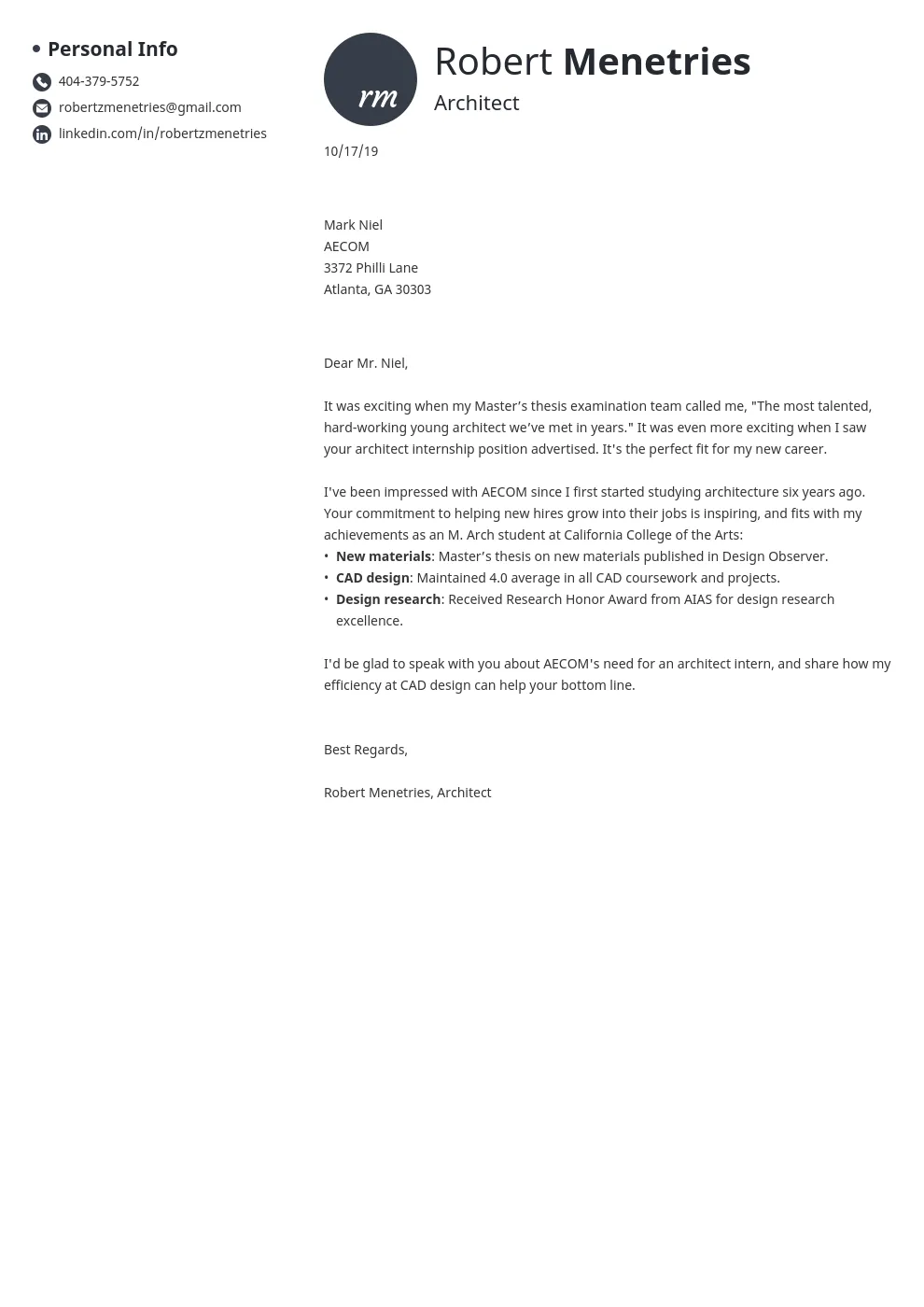
Researching the architecture firm and demonstrating your knowledge of its work is a crucial step. Show that you are genuinely interested in the company by mentioning specific projects, design philosophies, or areas of expertise that resonate with you. Referencing their work shows that you have taken the time to understand their practice and that you see yourself fitting within their environment. Mention the aspects of their work that appeal to you, and explain how your skills and aspirations align with their firm’s values. This demonstrates that you are not only looking for an internship but also considering a future career with this firm. This can significantly increase your chances of getting noticed, demonstrating that you are invested in the firm’s values and projects.
The Importance of Tailoring Your Letter
A generic cover letter is unlikely to impress any hiring manager. Take the time to tailor each letter to the specific internship and the firm. Customize your letter by using keywords from the job description, emphasizing skills and experiences that align with the role’s requirements, and showcasing your knowledge of the company. The more specific your cover letter is, the more likely it is to resonate with the reader. This demonstrates your attention to detail and your understanding of the firm’s needs and expectations. Avoid using a template without making significant adjustments; personalization is key to making your application stand out from other applicants.
Expressing Your Enthusiasm and Availability
In the closing paragraph, reiterate your enthusiasm for the architecture internship. Express your eagerness to learn and contribute to the firm. State your availability for an interview and provide your contact information once more. Make it clear that you are available for the duration of the internship and willing to commit to the role. Thank the hiring manager for their time and consideration, and express your hope to hear from them soon. This final paragraph should leave a positive lasting impression and confirm your readiness to seize the opportunity. It should also demonstrate your professional and enthusiastic approach toward the role.
Proofreading and Formatting Your Cover Letter
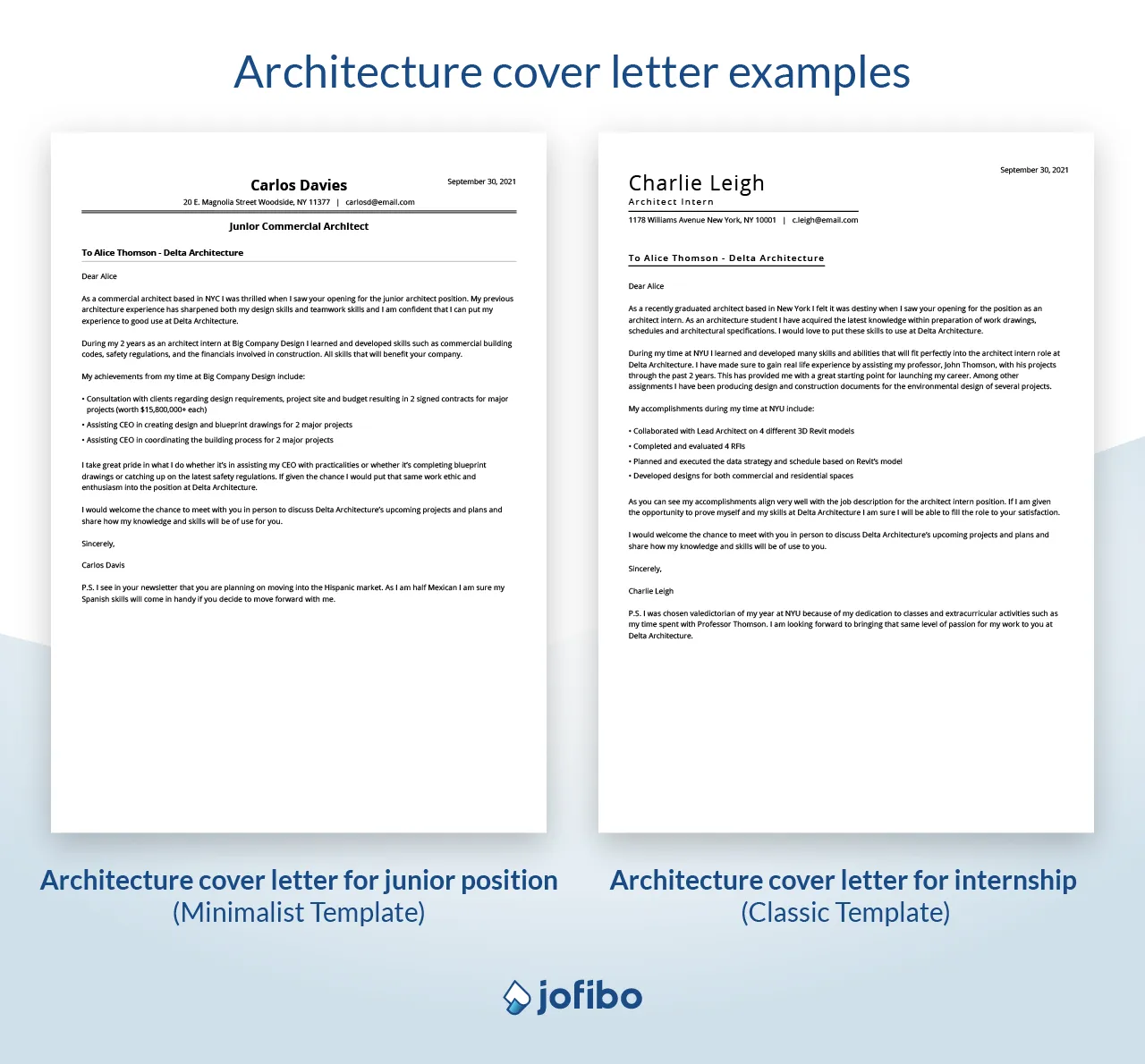
Before submitting your cover letter, carefully proofread it for any grammatical errors, spelling mistakes, or typos. A well-written, error-free cover letter is a direct reflection of your attention to detail and professionalism. Use a clear, easy-to-read font, such as Arial or Times New Roman, with a font size between 10 and 12 points. Ensure that the letter is well-formatted with consistent spacing and margins. Use bullet points and short paragraphs to make the content easy to read and digest. Consider asking a friend, professor, or career counselor to review your cover letter as a final check before submitting it. This can catch any errors you might have missed and ensure that your message is clear and impactful.
Formatting for Architecture Internship Cover Letter
Formatting your cover letter correctly is essential for a professional appearance. Use a standard business letter format with a clear heading that includes your contact information and the date. Maintain consistent margins, typically one inch on all sides. Use a readable font, such as Times New Roman or Arial, in a size between 10 and 12 points. Ensure your paragraphs are left-aligned and single-spaced, with a space between each paragraph. Use a professional and formal tone throughout the letter. Avoid informal language or slang. Your cover letter should be clean, organized, and easy to read. Poor formatting can detract from your message and create a negative impression. A well-formatted letter demonstrates your professionalism and attention to detail.
Sample Architecture Internship Cover Letter
A sample cover letter can serve as a useful guide in creating your own. Find sample architecture internship cover letters online, but remember to tailor them to your own skills, experiences, and the specific requirements of the job. Analyze the structure, language, and formatting of the sample letters to understand the best practices. Adapt the sample letter to reflect your unique qualifications and the firm’s specific needs. Do not simply copy and paste; customize it to make it your own. Use the sample as a model, but personalize the content to reflect your own personality and the unique benefits you will bring to the internship.
Final Touches and Submission
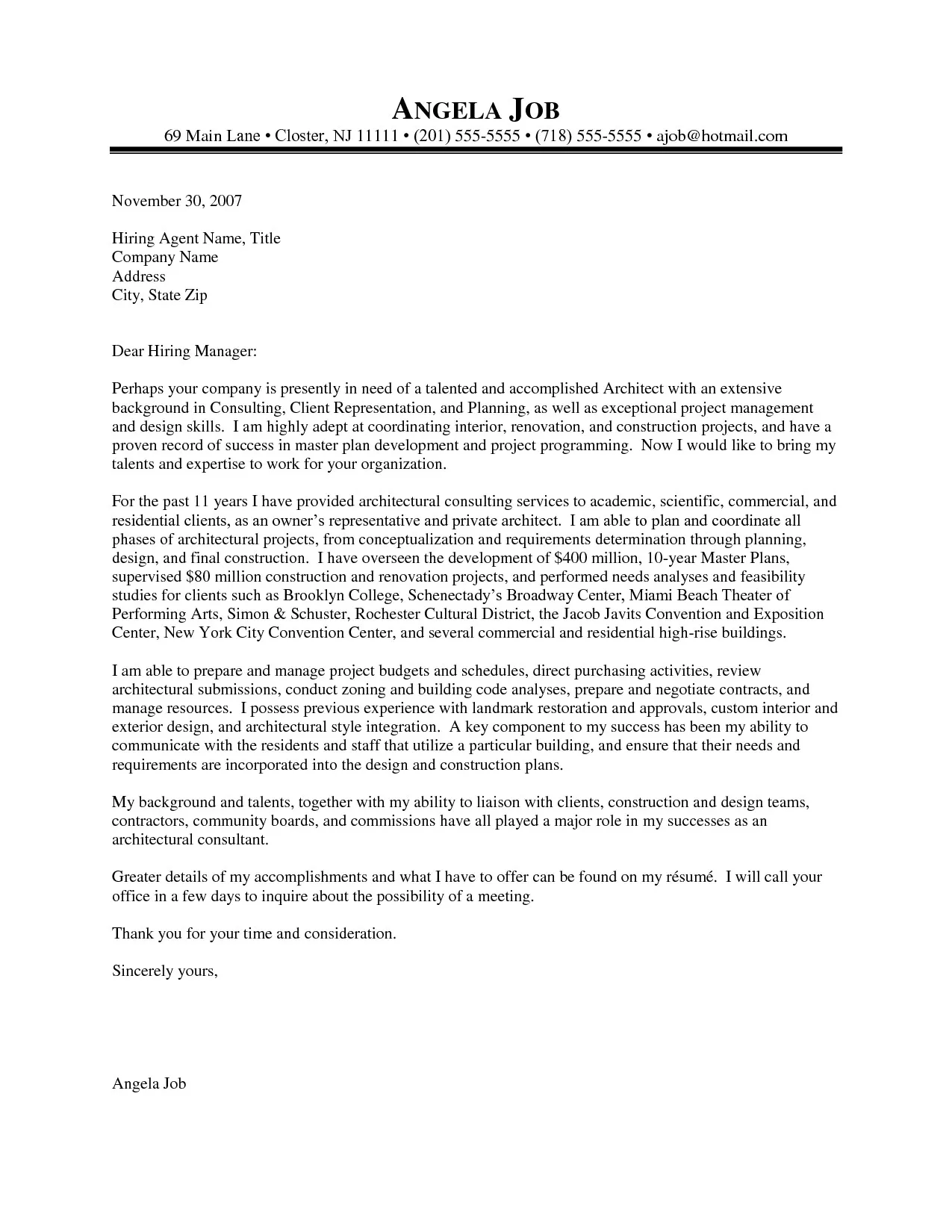
Before submitting your cover letter, make a final review. Check that all information is correct, including contact details and the hiring manager’s name. Ensure that the tone is professional and the writing is clear and concise. Attach your cover letter and resume in PDF format to maintain the formatting and ensure the documents are easy to view. Send your application on time; adhere to the application deadline specified in the job posting. Proofread one last time to prevent any last-minute errors. After submitting your application, follow up with the firm to show your interest in the role. A well-crafted, meticulously-reviewed cover letter can significantly enhance your chances of securing an architecture internship.
